Your browser does not support viewing this document. Click here to download the document.
President's Day
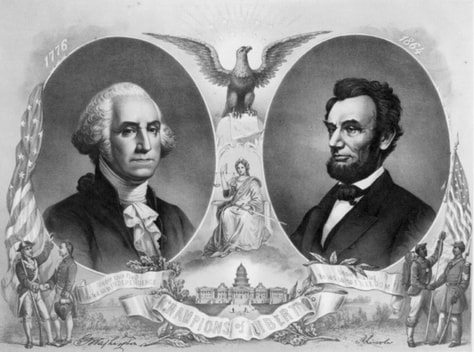
Both George Washington (Julian calendar February 11, 1731; Gregorian calendar February 22, 1732) and Abraham Lincoln (February 12, 1809) have traditionally been nationally celebrated close to their birthdays, on the third Monday in February. Most citizens seek to honor them, their service and their accomplishments in behalf of our nation. More recently the day has been extended as a means to recognize all of the Presidents of the United States.
We honor the individual, Christian characters of George Washington and Abraham Lincoln as we study their unique roles in God’s Providence of American and world history. We honor other Presidents of the United States according to their individual characters, contributions and worthiness.
We honor the individual, Christian characters of George Washington and Abraham Lincoln as we study their unique roles in God’s Providence of American and world history. We honor other Presidents of the United States according to their individual characters, contributions and worthiness.
Pi Day

The first noted record of the use of pi to calculate the dimension and area of a circle come from ancient Babylon. They used the quantity of 3. Though inaccurate, this calculation was close enough to be effective. The ancient Hebrews also showed a comprehension of this calculation in the building of Solomon’s temple. “And he made a molten sea, ten cubits from the one brim to the other: it was round all about, and his height was five cubits: and a line of thirty cubits did compass it about.” (I Kings 7, 23)
Archimedes (287-212 BC) and Zu Chongzhi (429–501) and many other mathematically talented individuals over centuries of time have brought the highly accurate designation of pi that we know and celebrate today, beginning famously 3.1415926...
We are grateful to our Heavenly Father for His orderly nature, the wonders of science and the beauties of art that comprehension of mathematical truth reveals to us.
If you love mathematics or not, today, March 14 at 1:59:26, grab a bit of any pi in the area and add to your circumference!
Archimedes (287-212 BC) and Zu Chongzhi (429–501) and many other mathematically talented individuals over centuries of time have brought the highly accurate designation of pi that we know and celebrate today, beginning famously 3.1415926...
We are grateful to our Heavenly Father for His orderly nature, the wonders of science and the beauties of art that comprehension of mathematical truth reveals to us.
If you love mathematics or not, today, March 14 at 1:59:26, grab a bit of any pi in the area and add to your circumference!
Saint Patrick’s Day
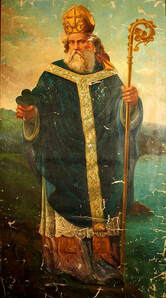
Saint Patrick, known also by his Latin name, Patricius and his Celtic name, Maewyn Succat, came to a desire to serve God and preach Christ through severe hardship. The sources of his history are two letters he wrote about his life.
He was born in Britain in the 5th century, Anno Domini. His family were Roman Christians who had an estate near the western shore. They were wealthy, but pious people who had several members in positions of leadership in the British Christian church. Christianity in Britain, though connected to the Catholic church, was somewhat independent and unique due to its distance from Rome.
Patrick said of himself that he was a rebellious, sinful and spoiled youth. All of that changed when he was 16 years old and his home was attacked by pirates from Ireland. Many of the household were slain before his eyes. He and the survivors were, carried off and sold into slavery in Ireland. The youth who had known only ease and comfort, was plunged into want, misery and hard labor.
The Christian teachings he had from his family arose in his mind to strengthen him. He reported that he prayed so much that other slaves called him “Holy Boy”. Patrick saw first hand that the lack of the Gospel and the superstitions about magical leprechauns, luck and corresponding aversion to work had led to the sad state of the Irish being steeped in error, indolence, slavery and piracy.
“God used the time to shape and mold me into something better. He made me into what I am now - someone very different from what I once was, someone who can care about others and work to help them. Before I was a slave, I did not care about myself.” St. Patricius
Patrick escaped after six years of bondage. However, the Spirit had moved him to love the people of Ireland and he returned to live among them. He dedicated the rest of his life to improving the impoverished, dangerous and hostile conditions in pagan Ireland by “virtue of the word of God.” (Alma 31:5) He even sought to teach the man who had enslaved him and lamented that he had died before hearing the Gospel. Patrick is credited with the establishment of over 200 churches and the conversion to Christianity of approximately 100,000 people in Ireland.
“Could I have come to Ireland without thought of God, merely in my own interest? Who was it made me come? For here I am a prisoner of the Spirit so that I may not see any of my family. Can it be out of the kindness of my heart that I carry out such a labor of mercy on a people who once captured me when they wrecked my father's house and carried off his servants? For by descent I was a freeman, born of a Decurion father; yet I have sold this nobility of mine, I am not ashamed, nor do I regret that it might have meant some advantage to others. In short, I am a slave in Christ to this faraway people for the indescribable glory of everlasting life which is in Jesus Christ our Lord." St. Patricius
We honor Patrick on March 17 for his individual Christian character and unique role in God’s Providence. We also celebrate the culture and history of Ireland.
He was born in Britain in the 5th century, Anno Domini. His family were Roman Christians who had an estate near the western shore. They were wealthy, but pious people who had several members in positions of leadership in the British Christian church. Christianity in Britain, though connected to the Catholic church, was somewhat independent and unique due to its distance from Rome.
Patrick said of himself that he was a rebellious, sinful and spoiled youth. All of that changed when he was 16 years old and his home was attacked by pirates from Ireland. Many of the household were slain before his eyes. He and the survivors were, carried off and sold into slavery in Ireland. The youth who had known only ease and comfort, was plunged into want, misery and hard labor.
The Christian teachings he had from his family arose in his mind to strengthen him. He reported that he prayed so much that other slaves called him “Holy Boy”. Patrick saw first hand that the lack of the Gospel and the superstitions about magical leprechauns, luck and corresponding aversion to work had led to the sad state of the Irish being steeped in error, indolence, slavery and piracy.
“God used the time to shape and mold me into something better. He made me into what I am now - someone very different from what I once was, someone who can care about others and work to help them. Before I was a slave, I did not care about myself.” St. Patricius
Patrick escaped after six years of bondage. However, the Spirit had moved him to love the people of Ireland and he returned to live among them. He dedicated the rest of his life to improving the impoverished, dangerous and hostile conditions in pagan Ireland by “virtue of the word of God.” (Alma 31:5) He even sought to teach the man who had enslaved him and lamented that he had died before hearing the Gospel. Patrick is credited with the establishment of over 200 churches and the conversion to Christianity of approximately 100,000 people in Ireland.
“Could I have come to Ireland without thought of God, merely in my own interest? Who was it made me come? For here I am a prisoner of the Spirit so that I may not see any of my family. Can it be out of the kindness of my heart that I carry out such a labor of mercy on a people who once captured me when they wrecked my father's house and carried off his servants? For by descent I was a freeman, born of a Decurion father; yet I have sold this nobility of mine, I am not ashamed, nor do I regret that it might have meant some advantage to others. In short, I am a slave in Christ to this faraway people for the indescribable glory of everlasting life which is in Jesus Christ our Lord." St. Patricius
We honor Patrick on March 17 for his individual Christian character and unique role in God’s Providence. We also celebrate the culture and history of Ireland.
Purim
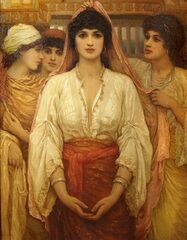
Faith is the principle of action. Mordecai and his daughter, Esther, faced a perilous circumstance with great fortitude of faith. Haman, a man full of jealousy and hatred who occupied a position of great power and influence, was deceived by his belief in fortune (luck). He cast lots and was given a day on which to promote the slaughter of Jews within the Persian empire.
Purim means lots, and the Feast of Purim or Lots was named by the Israelites to mock Haman’s superstition and the manner in which it betrayed him. The day he believed favored his scheme, proved his own downfall. (Esther 9:25)
The observance of Purim commemorates the courage of Mordecai and Esther and the Providence of God that placed these uniquely prepared individuals in time and place.
As the wife of the Persian king Ahasuerus, Esther was not imperiled by Haman’s plot. Nevertheless, she cared for her people and put her life in danger and her father consecrated her to this purpose. She embraced her mission saying, “If I perish, I perish.” (Esther 4:16)
The Christian Character that led Mordecai and Esther to act for the salvation of their people and to thwart their wicked enemies, is a type and a foreshadow the mission of the Messiah.
As we ready ourselves for observance of the ultimate Atonement of the Christ at Easter, we can appreciate that each of us has a part in emulating Him in boldly and faithfully devoting ourselves to the well-being and rescue of our generation. This Sunday is Purim. It is a day anciently set in scripture to invite us to ponder the book of Esther (9:27-28)
Purim means lots, and the Feast of Purim or Lots was named by the Israelites to mock Haman’s superstition and the manner in which it betrayed him. The day he believed favored his scheme, proved his own downfall. (Esther 9:25)
The observance of Purim commemorates the courage of Mordecai and Esther and the Providence of God that placed these uniquely prepared individuals in time and place.
As the wife of the Persian king Ahasuerus, Esther was not imperiled by Haman’s plot. Nevertheless, she cared for her people and put her life in danger and her father consecrated her to this purpose. She embraced her mission saying, “If I perish, I perish.” (Esther 4:16)
The Christian Character that led Mordecai and Esther to act for the salvation of their people and to thwart their wicked enemies, is a type and a foreshadow the mission of the Messiah.
As we ready ourselves for observance of the ultimate Atonement of the Christ at Easter, we can appreciate that each of us has a part in emulating Him in boldly and faithfully devoting ourselves to the well-being and rescue of our generation. This Sunday is Purim. It is a day anciently set in scripture to invite us to ponder the book of Esther (9:27-28)
Vernal Equinox

The Seasons: Vernal Equinox, Summer Solstice, Autumnal Equinox and Winter Solstice
Vernal means belonging to spring and youth. Equinox means equal night. Though daylight feints and fades as winter comes, just as the darkest day besets us, the planet swings about and heads to the bright new day. Vernal Equinox is the meridian.
God organized and set the universe in motion. Motion is the essence of time. The clockwork of creation is a vital part of Providence, our Father’s loving care and provision.
For the keeping of times and seasons the wonders and signs in the heavens were designed. “And again, verily I say unto you, he hath given a law unto all things, by which they move in their times and their seasons.” (D&C88:42) There are many blessings, physical, intellectual and spiritual, that have come through the rhythm of nature as it impresses upon the mind the concepts of order, law, cycle and progress. The unique character of each season as well as how they are experienced at various locations across our globe inspire art, symbolism, anticipation and nuances of disposition.
“And their courses are fixed, even the courses of the heavens and the earth, which comprehend the earth and all the planets.
And they give light to each other in their times and in their seasons, in their minutes, in their hours, in their days, in their weeks, in their months, in their years—all these are one year with God, but not with man.
The earth rolls upon her wings, and the sun giveth his light by day, and the moon giveth her light by night, and the stars also give their light, as they roll upon their wings in their glory, in the midst of the power of God.
Unto what shall I liken these kingdoms, that ye may understand?
Behold, all these are kingdoms, and any man who hath seen any or the least of these hath seen God moving in his majesty and power.” (D&C88:43-47)
The Vernal Equinox occurs variously each year on the 20th, 21st, or 22nd of March. Easter is then observed on the Sunday after the first full moon of spring.
Take heart, the season of Atonement is upon us!
Vernal means belonging to spring and youth. Equinox means equal night. Though daylight feints and fades as winter comes, just as the darkest day besets us, the planet swings about and heads to the bright new day. Vernal Equinox is the meridian.
God organized and set the universe in motion. Motion is the essence of time. The clockwork of creation is a vital part of Providence, our Father’s loving care and provision.
For the keeping of times and seasons the wonders and signs in the heavens were designed. “And again, verily I say unto you, he hath given a law unto all things, by which they move in their times and their seasons.” (D&C88:42) There are many blessings, physical, intellectual and spiritual, that have come through the rhythm of nature as it impresses upon the mind the concepts of order, law, cycle and progress. The unique character of each season as well as how they are experienced at various locations across our globe inspire art, symbolism, anticipation and nuances of disposition.
“And their courses are fixed, even the courses of the heavens and the earth, which comprehend the earth and all the planets.
And they give light to each other in their times and in their seasons, in their minutes, in their hours, in their days, in their weeks, in their months, in their years—all these are one year with God, but not with man.
The earth rolls upon her wings, and the sun giveth his light by day, and the moon giveth her light by night, and the stars also give their light, as they roll upon their wings in their glory, in the midst of the power of God.
Unto what shall I liken these kingdoms, that ye may understand?
Behold, all these are kingdoms, and any man who hath seen any or the least of these hath seen God moving in his majesty and power.” (D&C88:43-47)
The Vernal Equinox occurs variously each year on the 20th, 21st, or 22nd of March. Easter is then observed on the Sunday after the first full moon of spring.
Take heart, the season of Atonement is upon us!
Easter
Passover and the Atonement
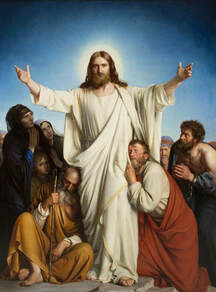
During their bondage in Egypt, Israel was given the pattern of Passover by which the people through ordinance, obedience and the symbolism of the Lamb’s blood, were passed over by death. The firstborn of families observing the Passover often fast in remembrance of the firstborn of Egypt who died. By instituting Passover, temple worship and in many other ordinances and pronouncements throughout the Bible, Prophets foretold the plan for atonement that was set in motion in the Great Council of Heaven. According to this principle, or first cause, we teach history as His Story, meaning the mission given by the Father to Jesus Christ, the one among His children whose individuality is marked by perfection. Jesus, called Jehovah in that pre-mortal existence, voluntarily undertook the role of the Messiah (Christ), the Anointed One (set apart by ordinance), and Apostle, the One Sent. Each one of us chose Him and our Father’s plan “to bring to pass the immortality and eternal life of man”.
People having freedom to choose, agency to represent, and Liberty to account to God, slip the bounds of external control and embark upon the development of individual, internal self-government. Each of us has the opportunity to choose to reach for inspiration from God as we make our choices. As with all infant endeavors, there are falls and injuries. Only the grace of the Perfect Christ can lift and heal us. Without Him, no one could learn and progress, and no one could be redeemed.
The worth of each one of us was set when Jesus Christ paid the price of atonement with suffering, blood and death. We may renew at “Easter” the infinite worth of a soul as we acknowledge the infinite sacrifice each cost. We may rejoice in resurrection, renewal, forgiveness, and eternity, at one with God and His eternal family.
People having freedom to choose, agency to represent, and Liberty to account to God, slip the bounds of external control and embark upon the development of individual, internal self-government. Each of us has the opportunity to choose to reach for inspiration from God as we make our choices. As with all infant endeavors, there are falls and injuries. Only the grace of the Perfect Christ can lift and heal us. Without Him, no one could learn and progress, and no one could be redeemed.
The worth of each one of us was set when Jesus Christ paid the price of atonement with suffering, blood and death. We may renew at “Easter” the infinite worth of a soul as we acknowledge the infinite sacrifice each cost. We may rejoice in resurrection, renewal, forgiveness, and eternity, at one with God and His eternal family.
All Hallow's Eve
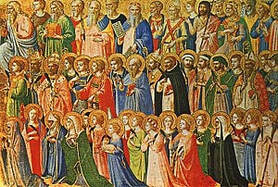
During the centuries following the mortal mission of Jesus Christ, many people made extraordinary efforts and sacrifices to live and teach the Gospel throughout the world. They often chose to forgo the usual pleasures and comforts of life. Some gave their lives while boldly declaring their testimonies in the midst of ignorance, poverty and the power struggles of tyrannical, worldly principalities. People who recognized the blessings that came by the efforts of these dedicated individuals called them saints and set aside time to honor them.
By the 10th century Anno Domini, Christian church leaders decided that a single day should be set aside to honor all martyrs and saints. They used the word from “Hallowed by thy name” from the Lord’s Prayer to describe the day. The day selected to hallow the saints was November 1st, and the night before, October 31st was called All Hallows’ Eve. Eventually the name of the day and the celebration was shortened to Halloween.
In the 16th century, John Foxe began to compile a book he titled Acts and Monuments of Matters Happening to the Church. It is commonly known as Foxe’s Book of Martyrs. The accounts of martyrs and saints have been continually added to this book.
“The Prophet Joseph Smith had borrowed the volumes of the Book of Martyrs by the sixteenth-century English cleric John Foxe from the mother of Edward Stevenson of the Seventy. After he read them, he said, “I have, by the aid of the Urim and Thummim, seen those martyrs, and they were honest, devoted followers of Christ, according to the light they possessed, and they will be saved.” (Boyd K. Packer On Zion’s Hill Oct. 2005)
All Hallows’ Eve is an excellent opportunity to read John Foxe’s book, consider the deeds of our pioneer ancestors and show appreciation for Individual Christian Character throughout history. We and our students like to choose a hero from history, dress up and share stories.
"What storms and tempests it [the church] hath overpast, wondrous it is to behold." John Foxe
By the 10th century Anno Domini, Christian church leaders decided that a single day should be set aside to honor all martyrs and saints. They used the word from “Hallowed by thy name” from the Lord’s Prayer to describe the day. The day selected to hallow the saints was November 1st, and the night before, October 31st was called All Hallows’ Eve. Eventually the name of the day and the celebration was shortened to Halloween.
In the 16th century, John Foxe began to compile a book he titled Acts and Monuments of Matters Happening to the Church. It is commonly known as Foxe’s Book of Martyrs. The accounts of martyrs and saints have been continually added to this book.
“The Prophet Joseph Smith had borrowed the volumes of the Book of Martyrs by the sixteenth-century English cleric John Foxe from the mother of Edward Stevenson of the Seventy. After he read them, he said, “I have, by the aid of the Urim and Thummim, seen those martyrs, and they were honest, devoted followers of Christ, according to the light they possessed, and they will be saved.” (Boyd K. Packer On Zion’s Hill Oct. 2005)
All Hallows’ Eve is an excellent opportunity to read John Foxe’s book, consider the deeds of our pioneer ancestors and show appreciation for Individual Christian Character throughout history. We and our students like to choose a hero from history, dress up and share stories.
"What storms and tempests it [the church] hath overpast, wondrous it is to behold." John Foxe
Reformation Day
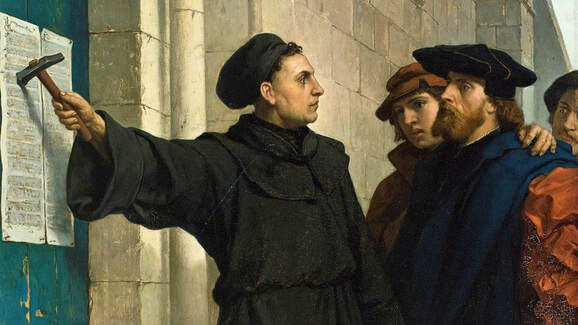
In 1517 AD, Martin Luther chose All Hallows’ Eve to nail to the door of Wittenburg Chapel his 95 thesis concerning the return of the church of Christ to its original teachings and ordinances as found in the Holy Scriptures. The day seemed to speak of the sacredness that was defiled by apostasy and cynical human opportunism. Luther was crying out remembrance and penitence for having diminished the memory not only of Saints, but of the Messiah himself. In this manner, October 31st was also made Reformation Day.
Christmas
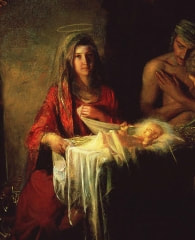
A spring setting begins with “shepherds abiding in the field, keeping watch over their sheep by night.” (Luke 2:8) Modern Prophets confirm that a Heavenly Host filled the warm skies of April to proclaim the advent of our Messiah on the 6th day.
The Christmas celebration of the birth of the Savior in December may be linked to other important events significant to our worship of God and His Son. The winter solstice reveals God’s clockwork in the universe. The time and season of earth turning from growing darkness to growing daylight conveys hope, life, redemption and resurrection. Some calculate that wise men from the East arrived in the first days of winter with presents for Jesus and his family who already had been threatened by the pretentious of worldly Kings, “rulers of the darkness of this world and... spiritual wickedness in high places.” (Ephesians. 6:12)
We rejoice in the seasons and in the beauty of remembrance of Jesus’ sweetest, most peaceful, mortal moments as a treasured child secured in a holy family, in a Tree of Life symbolically bedecked with beautiful “fruit” representational of the Love of God, and the Spirit of giving and sharing as in the traditional stories of exemplary, individual, Christian character in legendary Saint Nicholas.
The Christmas celebration of the birth of the Savior in December may be linked to other important events significant to our worship of God and His Son. The winter solstice reveals God’s clockwork in the universe. The time and season of earth turning from growing darkness to growing daylight conveys hope, life, redemption and resurrection. Some calculate that wise men from the East arrived in the first days of winter with presents for Jesus and his family who already had been threatened by the pretentious of worldly Kings, “rulers of the darkness of this world and... spiritual wickedness in high places.” (Ephesians. 6:12)
We rejoice in the seasons and in the beauty of remembrance of Jesus’ sweetest, most peaceful, mortal moments as a treasured child secured in a holy family, in a Tree of Life symbolically bedecked with beautiful “fruit” representational of the Love of God, and the Spirit of giving and sharing as in the traditional stories of exemplary, individual, Christian character in legendary Saint Nicholas.




